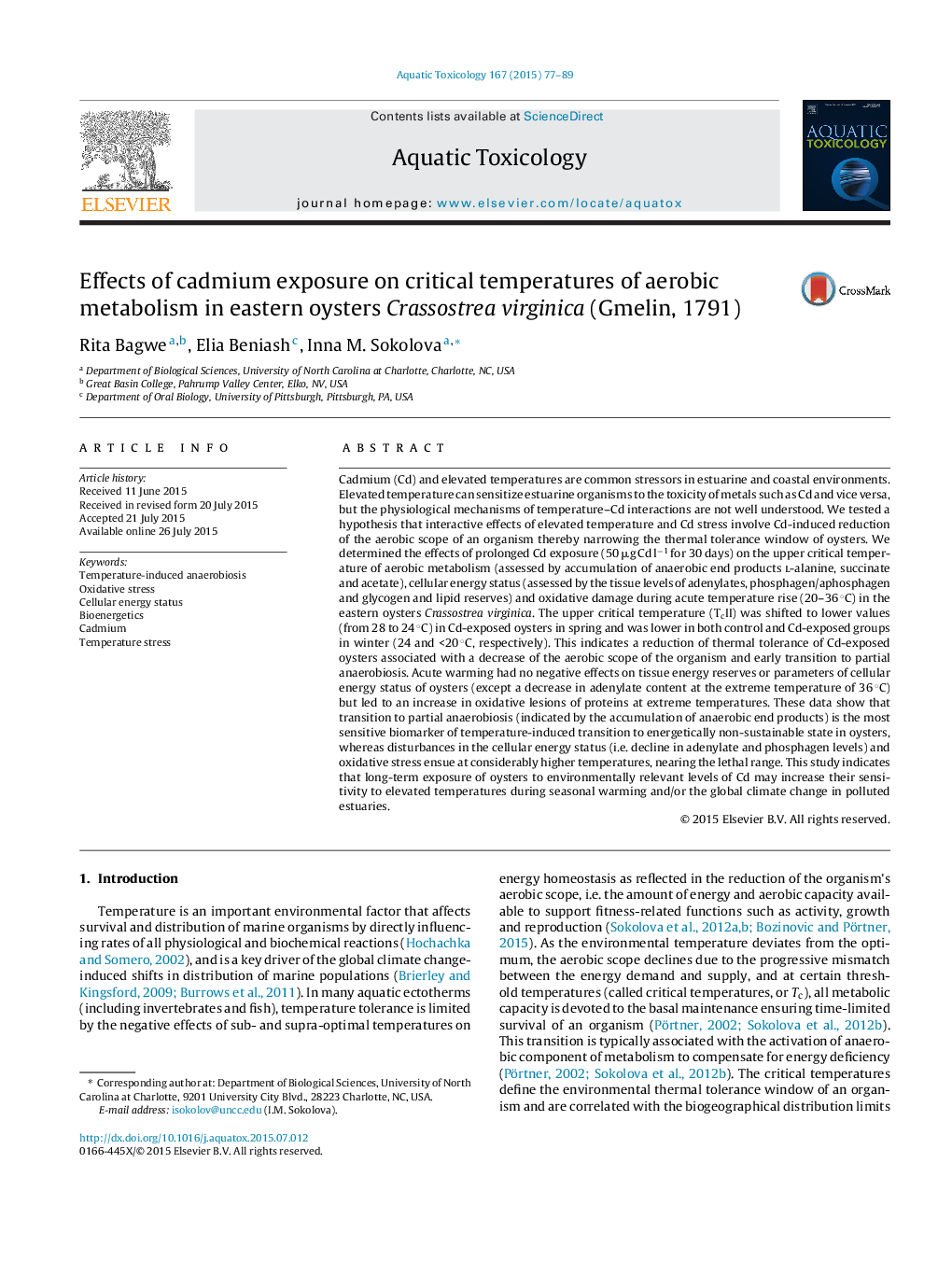| کد مقاله | کد نشریه | سال انتشار | مقاله انگلیسی | نسخه تمام متن |
|---|---|---|---|---|
| 6382146 | 1625938 | 2015 | 13 صفحه PDF | دانلود رایگان |

- Effects of Cd exposure on thermal tolerance of oysters were studied.
- Temperature rise (20-36 °C) led to transition to partial anaerobiosis at critical temperature TcII.
- Exposure to Cd reduced thermal tolerance indicated by a downward shift of TcII.
- Cellular energy status was maintained but oxidative stress occurred at extreme temperatures.
- Onset of anaerobiosis is a sensitive biomarker of temperature- and Cd-induced energetic stress.
Cadmium (Cd) and elevated temperatures are common stressors in estuarine and coastal environments. Elevated temperature can sensitize estuarine organisms to the toxicity of metals such as Cd and vice versa, but the physiological mechanisms of temperature-Cd interactions are not well understood. We tested a hypothesis that interactive effects of elevated temperature and Cd stress involve Cd-induced reduction of the aerobic scope of an organism thereby narrowing the thermal tolerance window of oysters. We determined the effects of prolonged Cd exposure (50 μg Cd lâ1 for 30 days) on the upper critical temperature of aerobic metabolism (assessed by accumulation of anaerobic end products l-alanine, succinate and acetate), cellular energy status (assessed by the tissue levels of adenylates, phosphagen/aphosphagen and glycogen and lipid reserves) and oxidative damage during acute temperature rise (20-36 °C) in the eastern oysters Crassostrea virginica. The upper critical temperature (TcII) was shifted to lower values (from 28 to 24 °C) in Cd-exposed oysters in spring and was lower in both control and Cd-exposed groups in winter (24 and <20 °C, respectively). This indicates a reduction of thermal tolerance of Cd-exposed oysters associated with a decrease of the aerobic scope of the organism and early transition to partial anaerobiosis. Acute warming had no negative effects on tissue energy reserves or parameters of cellular energy status of oysters (except a decrease in adenylate content at the extreme temperature of 36 °C) but led to an increase in oxidative lesions of proteins at extreme temperatures. These data show that transition to partial anaerobiosis (indicated by the accumulation of anaerobic end products) is the most sensitive biomarker of temperature-induced transition to energetically non-sustainable state in oysters, whereas disturbances in the cellular energy status (i.e. decline in adenylate and phosphagen levels) and oxidative stress ensue at considerably higher temperatures, nearing the lethal range. This study indicates that long-term exposure of oysters to environmentally relevant levels of Cd may increase their sensitivity to elevated temperatures during seasonal warming and/or the global climate change in polluted estuaries.
Journal: Aquatic Toxicology - Volume 167, October 2015, Pages 77-89